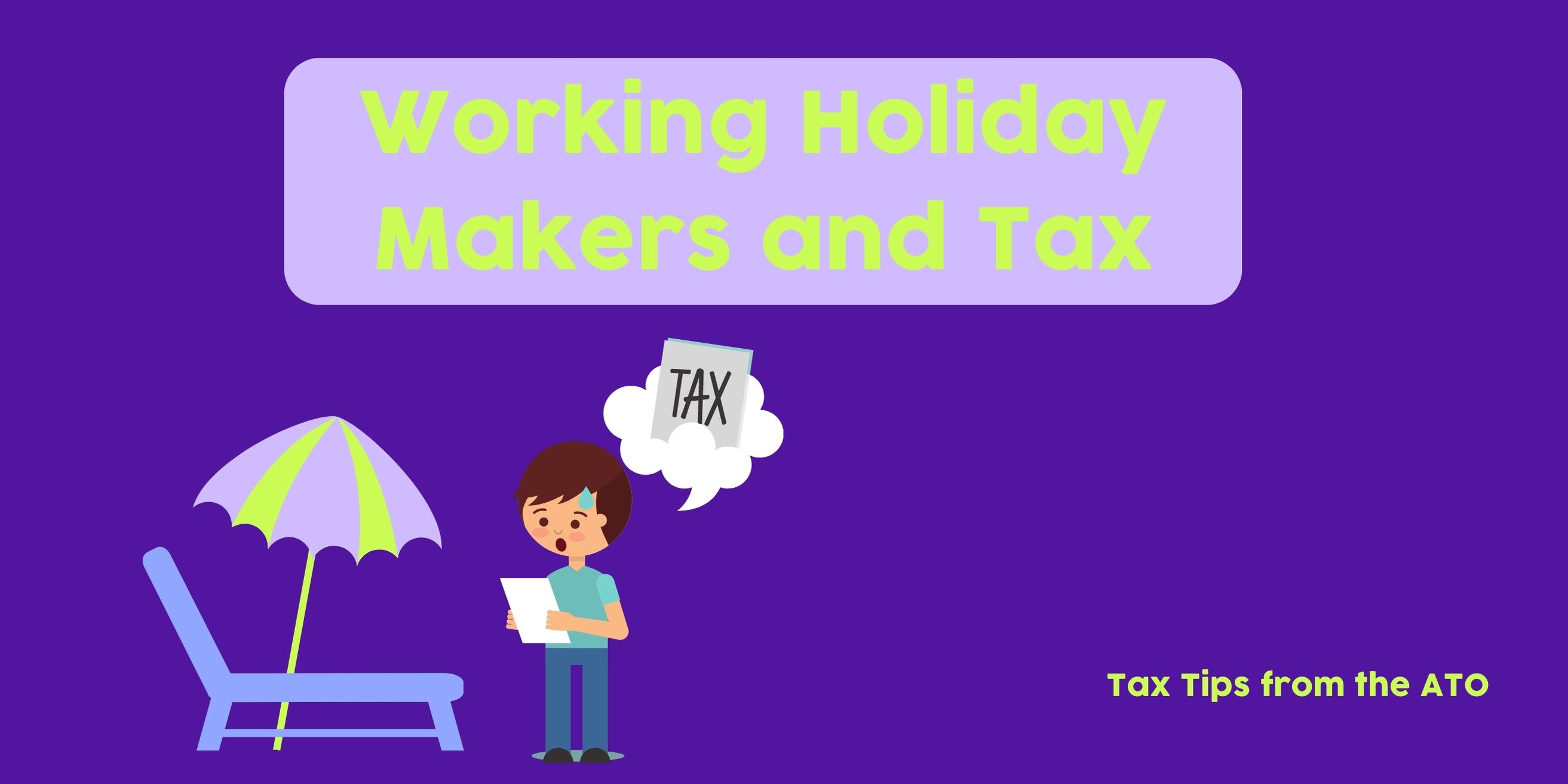Tips for working holiday makers
May 22, 2023

Are you planning to work while travelling around Australia? Whether you jump behind a bar while enjoying the coastal beach life or work on a farm while having a holiday in the outback– the ATO has all the tips you’ll need.
1. Getting a tax file number (TFN)
When you work in Australia as a working holiday maker (WHM), also called a backpacker, your employer will take tax out of your pay and give it to the Australian Taxation Office (ATO). To do this they need your Tax file number (TFN). So, this is the first thing you need to
get. You can apply for a TFN as soon as you have your work visa.
Tip: It can take up to 28 days to process your TFN application, so best to get your application in as soon as you can.
2. Paying tax
When you start working in Australia, your employer will ask you to fill out a Tax file number declaration. You’ll need to complete and return the TFN declaration for your employer within 28 days from your first day of work – otherwise you may end up paying more tax. Most WHMs are taxed at a rate of 15% on income up to $45,000. If you earn above this threshold, higher tax rates will apply.
To check how much income you’ve earned and how much tax you’ve paid, you can check:
- your payslip from your employer, or
- your income statement in ATO online services through myGov or the ATO app.
Superannuation
Superannuation (or super) is a form of saving for retirement in Australia. If you are eligible for super, your employer will be required to make super contributions to a super fund on your behalf. When you start working in Australia, your employer will ask you to fill out a Superannuation choice form to select the super fund account where your super contributions are paid. When you leave Australia, you can apply to have this super paid to you as a Departing Australia Superannuation Payment (DASP), as long as you meet certain requirements.
3. Your residency for tax purposes
Most people who come to Australia for a working holiday are foreign residents for tax purposes. This includes those with a 417 visa (Working holiday visa) or 462 visa (Work and holiday visa). If you work in Australia for a while, there may be circumstances where you could be taxed as an Australian resident. Go to the ATO website to see what's required to be considered a Resident for tax purposes.
Tip: You can check your visa status using the Visa Entitlement Verification Online system.
4. Employee vs contractor
You’ll need to know what type of worker you are – such as an employee or a contractor, as this will affect the way your tax is paid and any super obligations. Whether you’re an employee or contractor may also change for each job you do. If you aren’t sure, check out the ATO website for more information.
5. Lodging a tax return
Australia’s income year is 1 July – 30 June. At the end of the income year, or when you’ve finished working in Australia, you’ll need to access your income statement and work out whether you need to lodge a tax return. Most WHMs will not need to lodge a tax return. However, you will need to lodge one if :
- you are a resident of Australia for tax purposes and from a NDA country
- your total income for the income year was $45,001 or more
- you earned other income during your stay in Australia that is not salary and wage income from working as a WHM or it did not have 15% tax withheld.
You can choose to lodge an income tax return if you wish to claim any tax deductions – but you’ll need to make sure you’ve kept records of all your expenses. You can lodge a tax return online with myTax or through a registered tax agent. See the ATO’s website for how to lodge your tax return.
6. Know your rights
Everyone working in Australia has the same workplace rights under the National Employment Standards (NES) – including working holiday makers. This includes annual leave, maximum weekly hours, and a minimum wage. Find out what your rights are and who to contact if you have a problem or concern at the Fair work Ombudsman.


